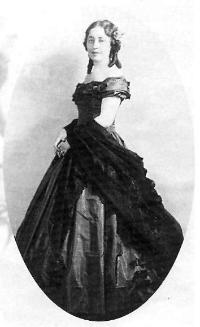Bistra Vinarova
| Bistra Vinarova | |
|---|---|

taken at a reception during their diplomatic term in Washington, D. C.
|
|
| Born |
6 November 1890 Sofia in the Principality of Bulgaria of the Ottoman Empire |
| Died | 15 April 1977 (aged 86) Sofia, People's Republic of Bulgaria |
| Nationality | Bulgarian |
| Occupation | artist |
| Years active | 1915–1963 |
| Known for | first Bulgarian woman of the expressionist school |
Bistra Vinarova (Bulgarian: Бистра Винарова; 6 November 1890 – 15 April 1977) was a Bulgarian artist and often credited as the first Bulgarian woman of the expressionist style. Trained in Bulgaria, Germany, and later Austria, she had wide acquaintance among the avant-garde literary and artistic figures in the early part of the twentieth century. Married to a diplomat, her career was interrupted by travel and hostess duties. After her return to Bulgaria in 1940, she resumed painting. For a period of time, she and her husband were both ostracized by the political regime, but late in life, she was honored with several national honors for her artistic works.
Bistra Vinarova, known as Nona, was born on 6 November 1890 in Sofia, which at the time was in the Principality of Bulgaria of the Ottoman Empire. Her parents were Elsa (née Valkovicha) and General Varban Vinarov . Her maternal grandfather, Georgi Valkovich was a noted surgeon and her maternal great-grandfather was Valko Kurtovic Chalakov (Bulgarian: Вълко Куртович Чалъков), a member of the Chalakov family , who had been benefactors of the city of Plovdiv since the Renaissance, building hospitals and churches in the city. Growing up in Sofia, Vinarova studied with the noted painter Elisaveta Konsulova-Vazova, who would later graduate from the Munich Academy of Fine Arts. In 1906, the family relocated to Vienna, where her father died two years later. In 1910, Vinarova met her future husband, Simeon Radev, when he came to interview her mother, as General Vinarov's widow, for a book he was preparing Builders of Modern Bulgaria.
In 1911, Vinarova moved to Dresden, to continue her studies with Ferdinand Dorsch. She became part of the German expressionist group known as Die Brücke and participated in their exhibitions. After five years of study she moved to Munich and began studying with Hans Hofmann, where she remained until 1918. Vinarova became noted among the European avant-garde Expressionist circle which included artists like Otto Dix, Conrad Felixmüller, Oskar Kokoschka and Bulgarian artists Bencho Obreshkov and George Papazov, among others. She was a correspondent of Rainer Maria Rilke, whom she had met by chance at a Rodin exhibit. The two struck up a friendship and Rilke dedicated several poems to her. Returning to Vienna, she studied at the Vienna Women's Academy, specializing in graphics arts.
...
Wikipedia
